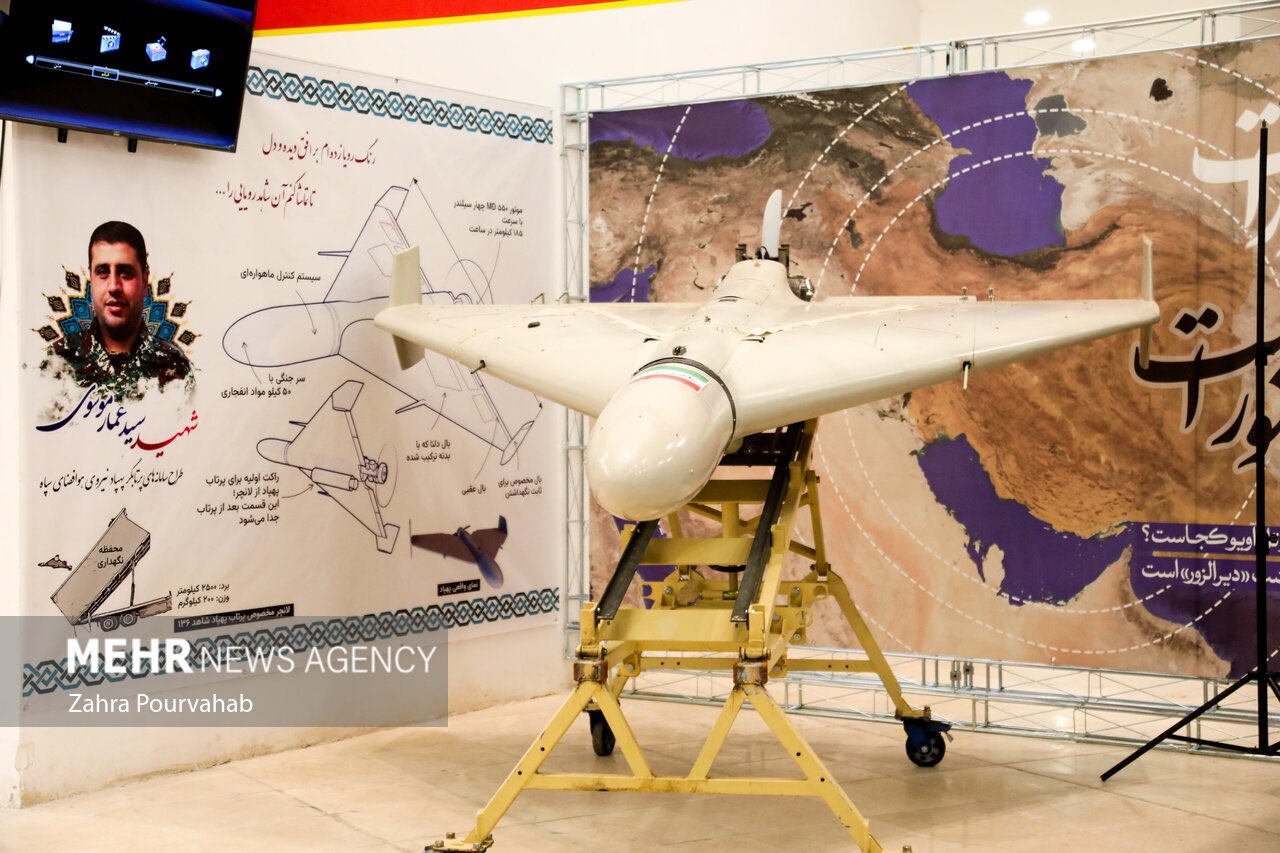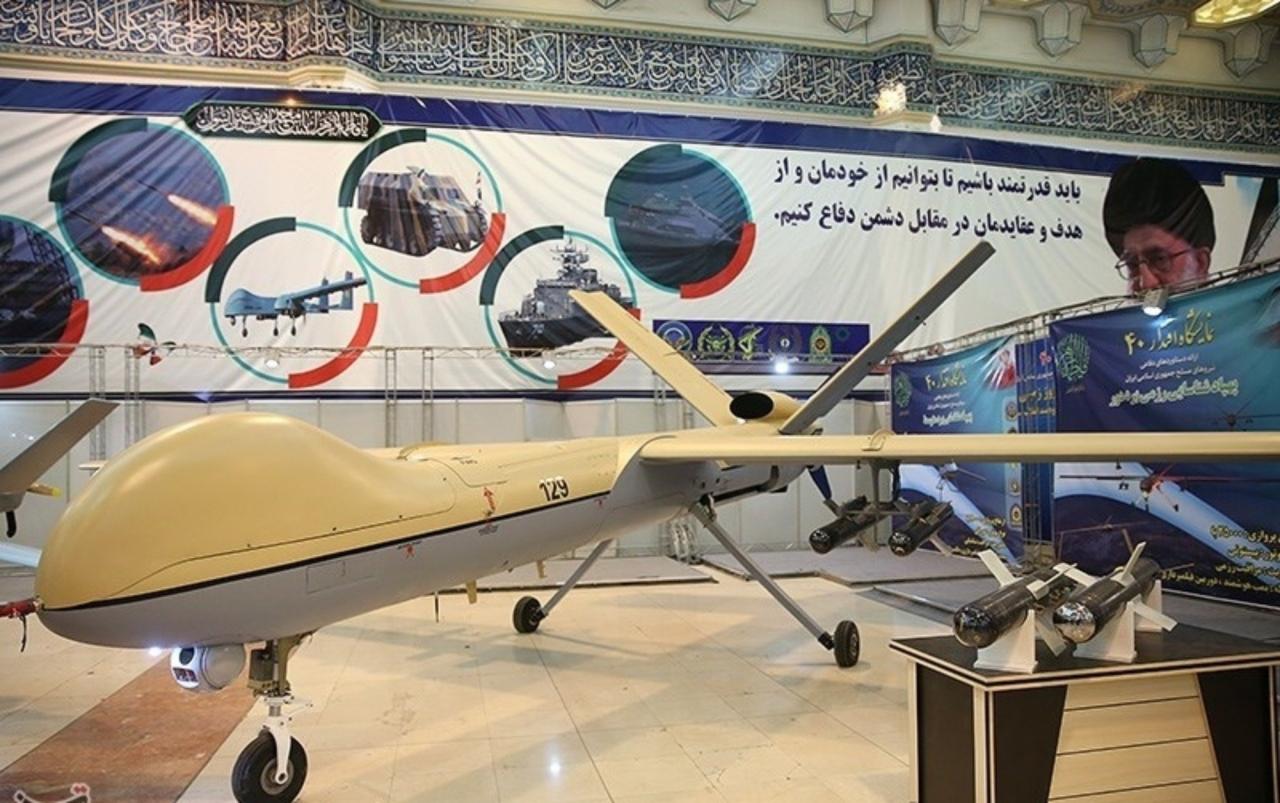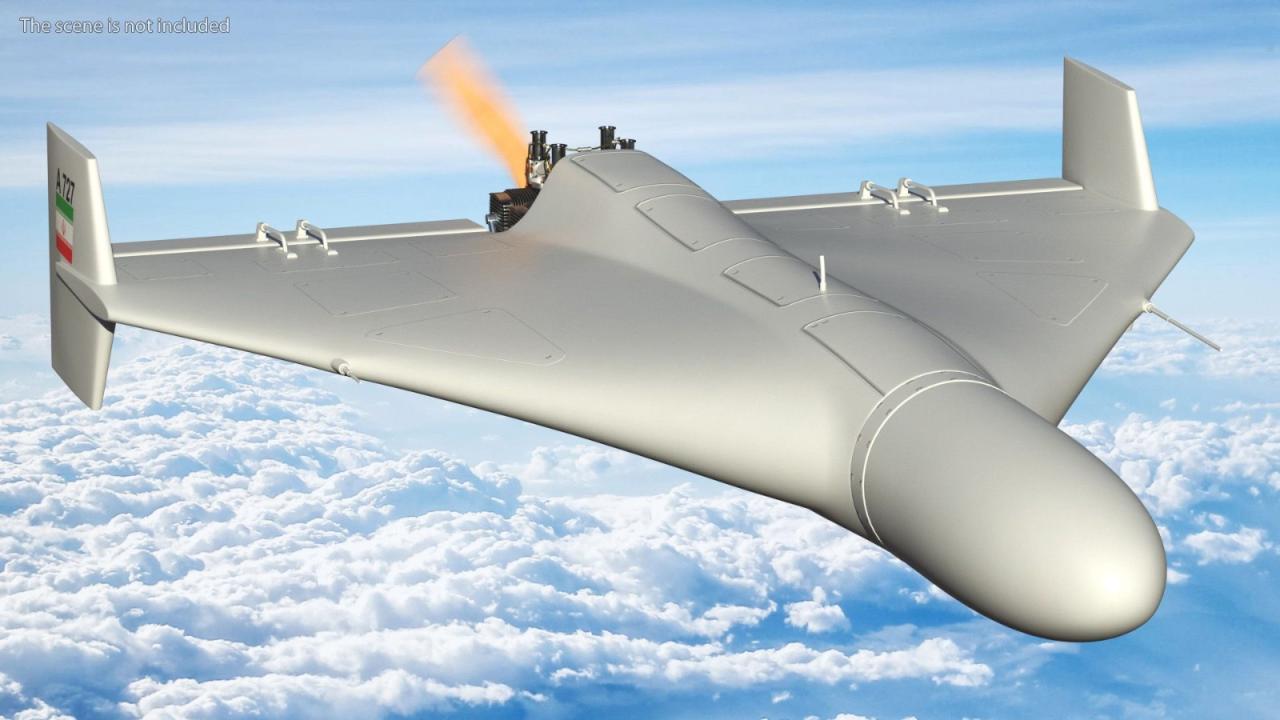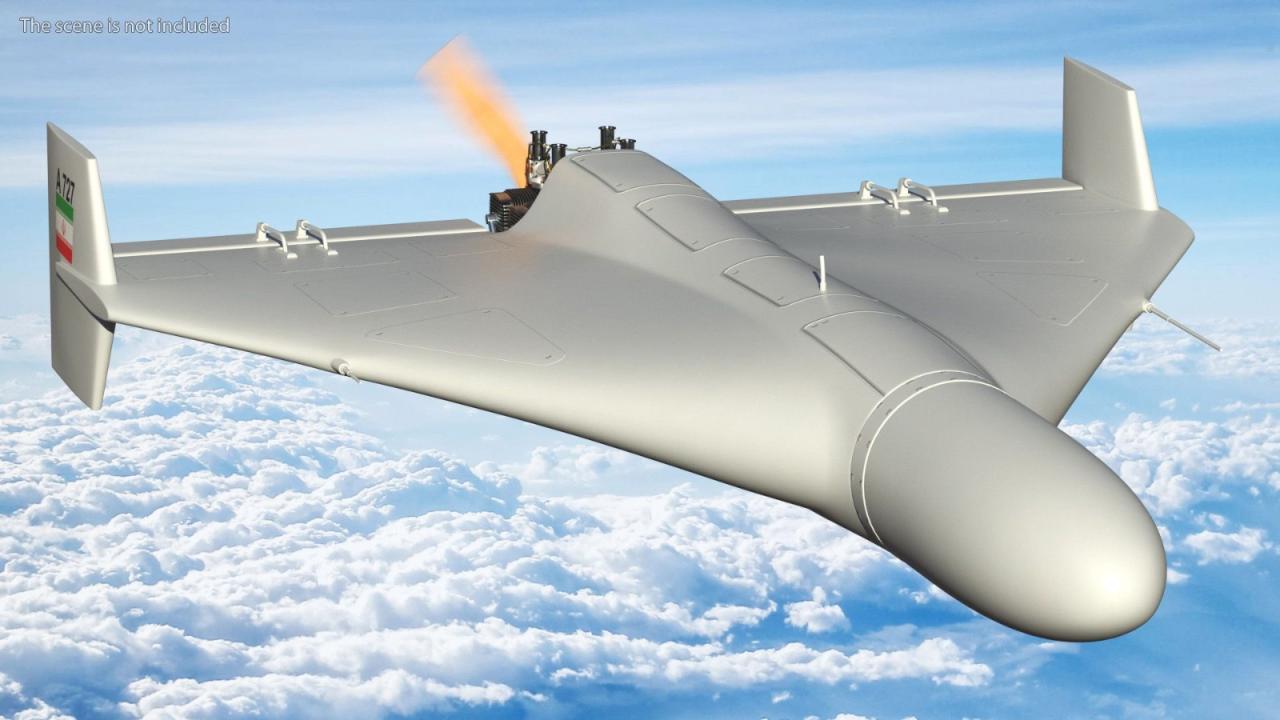Shahed drones have emerged as a significant player on the global stage, captivating attention with their operational capabilities and controversial deployment. This exploration delves into the technical specifications, operational methods, manufacturing processes, tactical implications, countermeasures, and broader impact of these unmanned aerial vehicles. From their relatively simple design to their far-reaching consequences, the Shahed drone presents a compelling case study in modern military technology and geopolitical strategy.
We will examine the drone’s design, its effectiveness in conflict, and the ongoing efforts to counter its use. Furthermore, we will analyze the ethical considerations surrounding its deployment and explore the broader geopolitical implications of its proliferation. The analysis will consider technical specifications, operational capabilities, manufacturing processes, deployment tactics, countermeasures, and the overall impact on military strategy and international relations.
Shahed Drone: A Comprehensive Overview

The Shahed drone, also known as the Shahed-136 or Geran-2, has emerged as a significant player in modern conflict, garnering attention for its operational deployment and impact on warfare. This analysis delves into the technical specifications, operational capabilities, manufacturing process, deployment tactics, countermeasures, and overall implications of this unmanned aerial vehicle (UAV).
Shahed Drone Technical Specifications
Understanding the technical specifications of the Shahed drone provides crucial insights into its capabilities and limitations. Key features include its size, weight, payload capacity, range, and flight duration. These specifications, when compared to commercially available drones, highlight its unique design and intended purpose.
| Model | Specification | Value | Unit |
|---|---|---|---|
| Shahed-136 | Length | 3.5 | meters |
| Shahed-136 | Wingspan | 2.5 | meters |
| Shahed-136 | Weight | 200 | kg |
| Shahed-136 | Payload Capacity | 40 | kg |
| Shahed-136 | Range | 2500 | km |
| Shahed-136 | Flight Duration | 10-14 | hours |
The Shahed drone utilizes a relatively simple propulsion system, likely a small, low-power internal combustion engine, which contributes to its affordability but also limits its speed, maneuverability, and overall operational sophistication compared to more advanced UAVs that employ electric motors or turbofan engines. Commercially available drones, often utilizing electric propulsion, generally offer greater flight times and quieter operation but often at the cost of range and payload capacity.
Shahed Drone Operational Capabilities
The operational capabilities of the Shahed drone are defined by its flight control systems, navigation methods, and targeting systems. The types of payloads it carries significantly impact its effects on the battlefield.
The drone’s flight control system, while not highly sophisticated, is sufficient for its intended purpose. Navigation is likely achieved through a combination of GPS and inertial navigation systems. Targeting is typically achieved through pre-programmed coordinates or potentially through operator control in some scenarios. The primary payload is a high-explosive warhead, designed for impact detonation, causing significant damage to its target.
The Shahed drone, a relatively inexpensive and widely used UAV, presents a significant challenge to modern air defenses. Understanding its capabilities often involves analyzing high-resolution imagery, such as that provided by systems like the advanced port dover camera , which offers exceptional clarity for identifying and tracking such aerial threats. This detailed visual data is crucial for developing effective countermeasures against the Shahed drone’s persistent threat.
Other potential payloads could include smaller explosive charges or electronic warfare components.
A typical Shahed drone mission sequence can be visualized as follows:
Shahed Drone Manufacturing and Production

The manufacturing process and supply chain for Shahed drones are characterized by their relative simplicity and reliance on readily available components. This contributes to the drone’s affordability and potentially high production volume.
- Assembly of pre-fabricated components.
- Integration of propulsion systems and electronics.
- Quality control and testing.
- Packaging and deployment.
Key components include the airframe (likely composite materials), propulsion system (internal combustion engine), navigation and control systems (GPS, inertial measurement unit), and the warhead. The estimated production cost is relatively low, enabling large-scale manufacturing. The scalability of production is significant, allowing for a rapid increase in the number of drones produced.
Shahed Drone Deployment and Tactics

Shahed drones are deployed using various methods, including ground launch and potentially air launch. Their tactical use varies depending on the operational context and objectives.
- Swarming Tactics: Employing multiple drones simultaneously to overwhelm defenses.
- Area Denial: Using drones to prevent enemy access to specific areas.
- Precision Strikes: Targeting specific high-value assets.
- Asymmetric Warfare: Utilizing drones to create a cost-effective advantage against technologically superior opponents.
Compared to other UAVs, Shahed drones are often deployed in larger numbers, relying on quantity over advanced technology. This contrasts with more sophisticated UAVs which might prioritize stealth, precision, and advanced sensor capabilities.
Shahed Drone Countermeasures
Neutralizing or disrupting Shahed drones requires a multi-faceted approach employing various countermeasures.
| Countermeasure | Method | Effectiveness | Limitations |
|---|---|---|---|
| Electronic Warfare | Jamming GPS signals, disrupting communication links | Moderately effective | Susceptible to sophisticated jamming techniques; requires close proximity |
| Physical Countermeasures | Small arms fire, anti-aircraft artillery | Highly effective at close range | Requires accurate targeting; potential for collateral damage |
| Directed Energy Weapons | Laser systems | Potentially highly effective | Requires precise targeting; limited range |
Electronic warfare techniques, such as GPS jamming, can disrupt the drone’s navigation and control systems. However, the effectiveness of these techniques depends on the sophistication of the jamming equipment and the drone’s resilience to such interference. Physical countermeasures, such as small arms fire or anti-aircraft artillery, can be effective, but require accurate targeting and pose the risk of collateral damage.
Emerging technologies like directed energy weapons offer a potential solution, but their development and deployment are still ongoing.
Shahed Drone Impact and Implications
The widespread use of Shahed drones has significantly impacted military strategy and tactics. The drone’s relatively low cost and ease of production have democratized access to UAV technology, altering the dynamics of modern warfare.
Geopolitically, the proliferation of Shahed drones has created concerns regarding regional stability and the potential for escalation of conflicts. The ethical implications are also significant, raising concerns about civilian casualties and the potential for misuse of this technology. The relatively low cost and ease of use of the Shahed drone raises concerns about its potential for proliferation and use by non-state actors.
Shahed Drone Imagery and Visual Representation
In flight, the Shahed drone presents a relatively small profile, with a slender, cigar-shaped body and relatively small wings. Its color is typically muted, often grayish or tan, designed for camouflage. Distinguishing markings may vary depending on the operator. A Shahed drone strike typically results in a localized explosion and fire, with the extent of damage depending on the size of the warhead and the nature of the target.
The visual impact can range from a small crater to significant structural damage. Compared to other UAVs, the Shahed drone is generally smaller and less sophisticated in appearance, lacking the more complex features of larger, more technologically advanced drones.
The Shahed drone’s impact extends far beyond its immediate battlefield applications. Its relatively low cost, ease of production, and effectiveness have reshaped military strategies and sparked a global conversation about asymmetric warfare and the ethics of drone technology. Understanding its capabilities, limitations, and implications is crucial for navigating the evolving landscape of modern conflict and international security. Further research into effective countermeasures and the broader ethical considerations remains paramount.
Q&A
What is the lifespan of a Shahed drone?
The operational lifespan varies depending on usage and maintenance, but it’s generally considered to be relatively short compared to more sophisticated drones.
The Shahed drone, a relatively inexpensive and readily available UAV, has garnered significant attention for its use in conflict zones. Incidents involving similar drones highlight the potential for widespread misuse; for instance, a recent news report detailed several concerning cases of drone crashes in New Jersey , raising questions about regulatory oversight and potential security threats. This underscores the need for improved counter-drone technologies to effectively mitigate the risks posed by the proliferation of Shahed drones and similar devices.
How accurate are Shahed drones’ targeting systems?
Accuracy varies significantly depending on the specific model and operational conditions. They are generally considered less precise than more advanced drones.
What are the primary materials used in Shahed drone construction?
Common materials include composites, plastics, and readily available electronics components.
Are Shahed drones easily repairable in the field?
While some repairs are possible, the complexity and availability of spare parts can limit field repairs.
